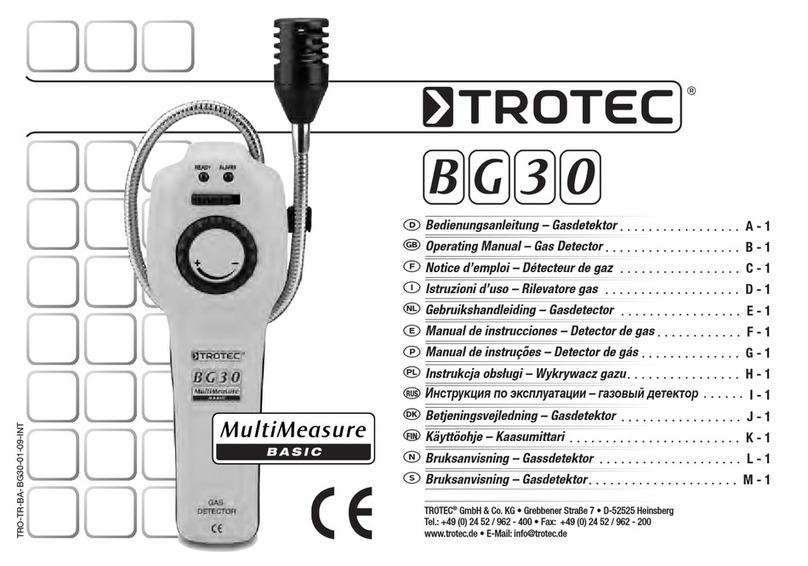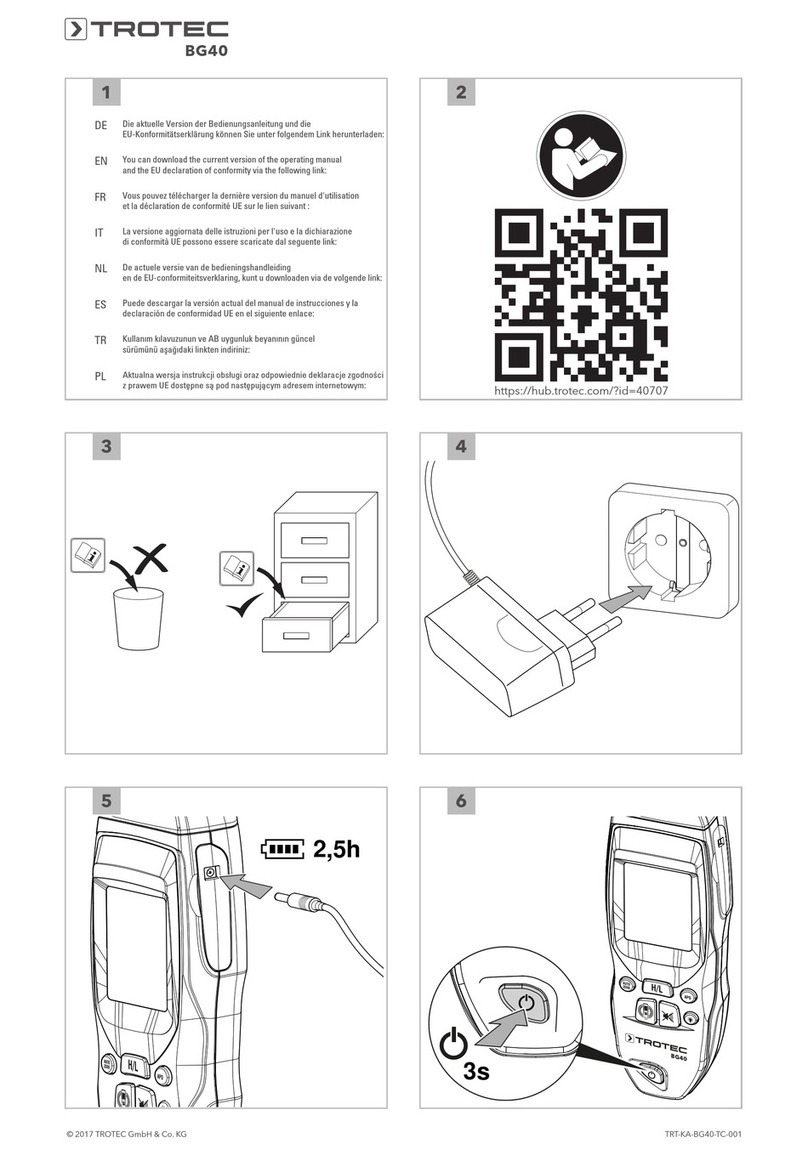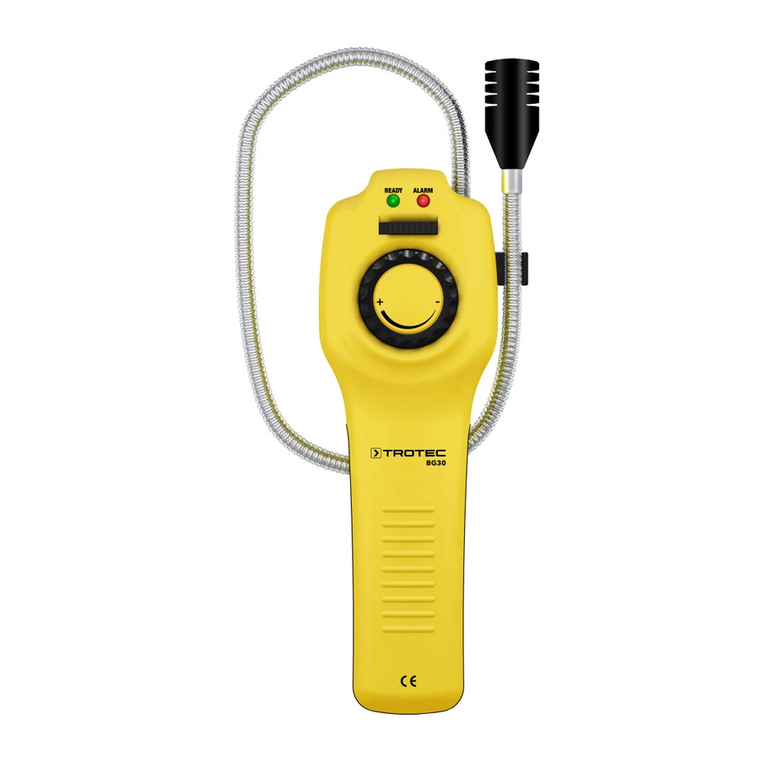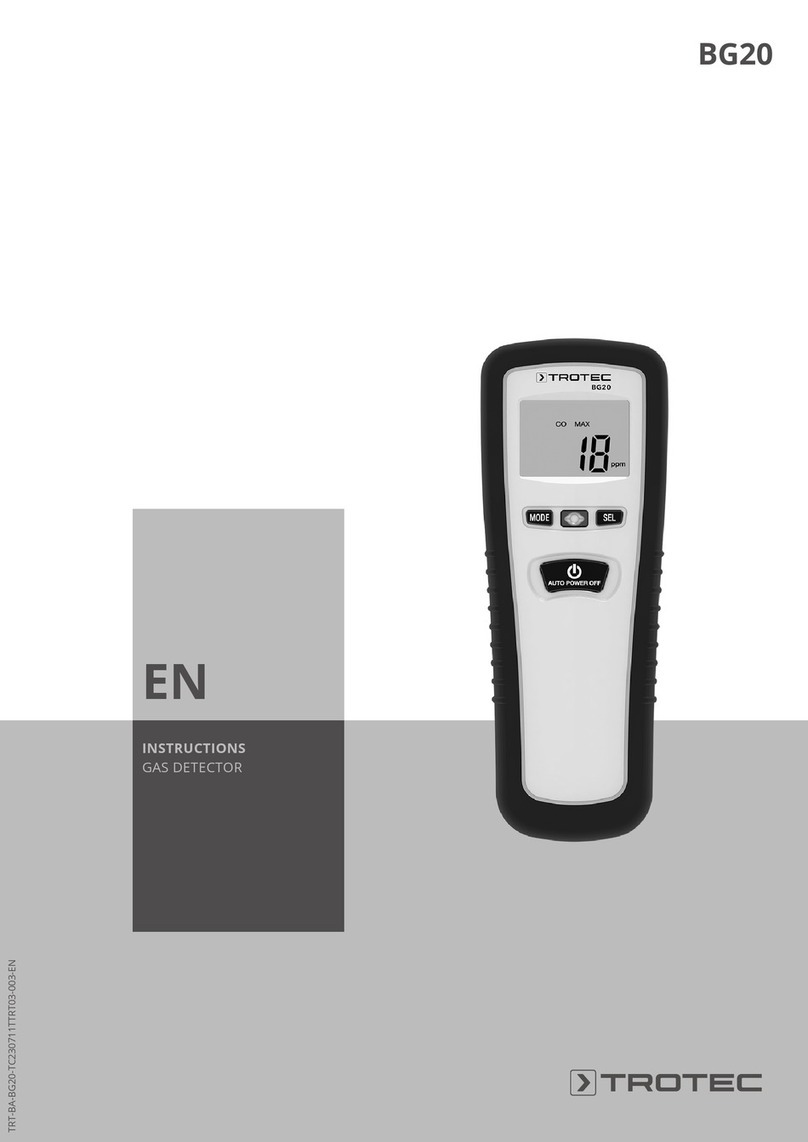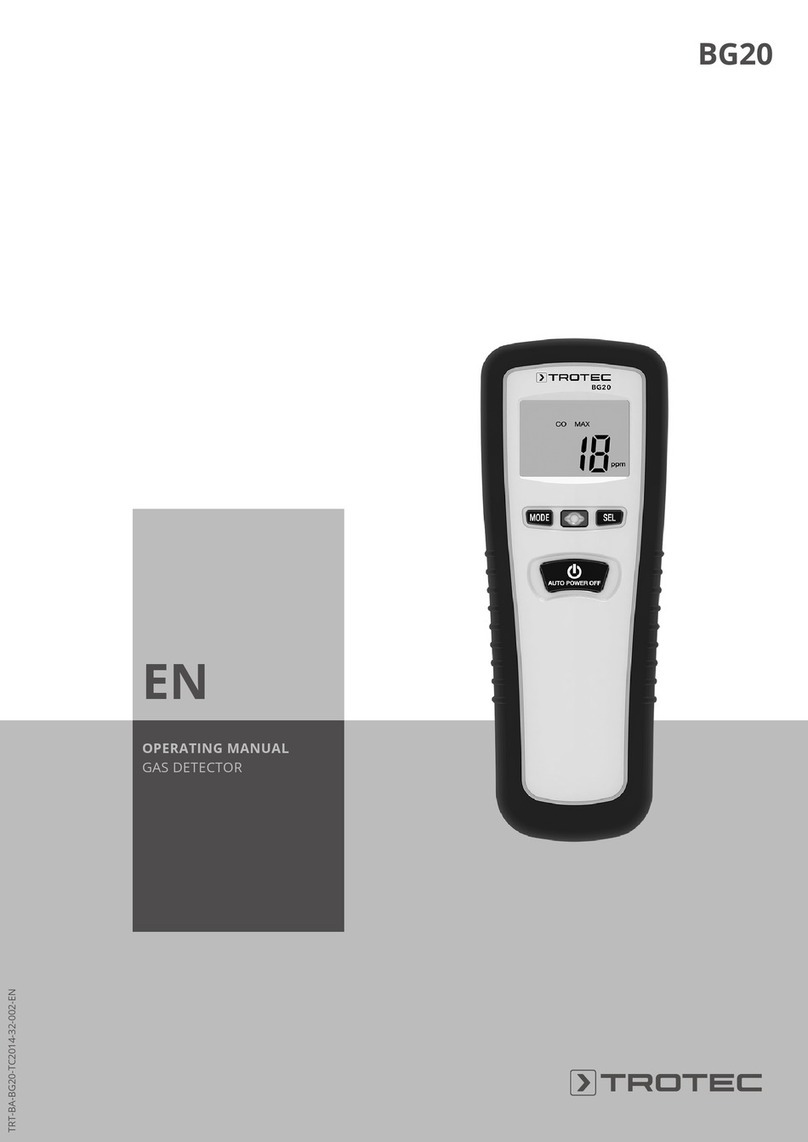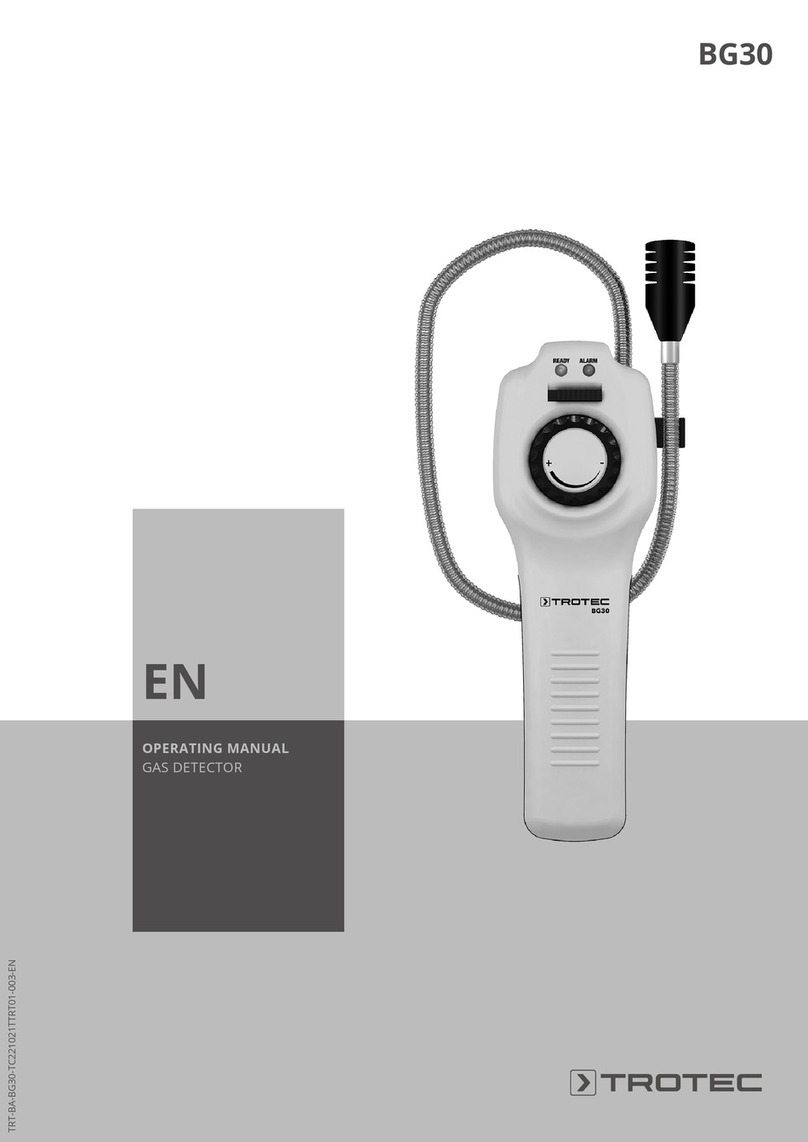
EN 3
gas detector BG40
• Calibrate the device in an environment that is free from
gases affecting the measurement.
Intended use
Only use the device to detect the following flammable or
interfering gases: natural gas, methane, ethane, propane,
butane, acetone, alcohol, ammonia, water vapour, petrol,
turbine fuel, hydrogen sulphide, smoke, industrial solvents,
paint thinners, naphtha.
Only use the device e.g. to detect gas leaks on pipelines or
fittings.
The device is able to detect gas concentrations of10% LEL
(Lower Explosion Limit).
The device is only intended for private, non-commercial use in
interior spaces.
To use the device for its intended use, only use accessories and
spare parts which have been approved by Trotec.
Improper use
Do not use the device in hazardous areas or in any areas where
an explosive gas/air mixture is likely to prevail.
The device is not intended for professional/commercial use.
Do not use the device as monitoring device for your personal
safety. The device is no protective equipment.
Do not use the device for measurements in liquids and at live
parts. Trotec accepts no liability for damages resulting from
improper use. In such a case, any warranty claims will be
voided. Any unauthorised modifications, alterations or structural
changes to the device are forbidden.
Personnel qualifications
People who use this device must:
• have read and understood the operating manual, especially
the Safety chapter.
Residual risks
Warning of electrical voltage
There is a risk of a short-circuit due to liquids
penetrating the housing!
Do not immerse the device and the accessories in
water. Make sure that no water or other liquids can
enter the housing.
Warning of electrical voltage
Work on the electrical components must only be
carried out by an authorised specialist company!
Warning of explosive substances
There is a danger of explosion due to sparking.
Switch on the measuring device in an atmosphere that
is free from combustible gas. The device calibrates
itself automatically after switch-on. If combustible
gases are already present in the environment, any
further measuring results can be distorted and
combustible gases may remain undetected.
Warning of explosive substances
Do not expose the battery to temperatures above
45°C! Do not let the battery come into contact with
water or fire! Avoid direct sunlight and moisture. There
is a risk of explosion!
Warning of explosive substances
Never charge the battery in a potentially explosive
atmosphere.
Warning
High concentrations of combustible gases cause a risk
of explosion, fire and suffocation.
Make yourself familiar with the safety data sheet
regarding the characteristics of the gas to be detected
and take the necessary precautions.
Warning
Risk of suffocation!
Do not leave the packaging lying around. Children may
use it as a dangerous toy.
Warning
The device is not a toy and does not belong in the
hands of children.
Warning
Dangers can occur at the device when it is used by
untrained people in an unprofessional or improper way!
Observe the personnel qualifications!
Caution
Lithium-ion batteries might catch fire in case of
overheating or damage. Ensure a sufficient distance to
heat sources, do not subject lithium-ion batteries to
direct sunlight and make sure not to damage the
casing. Do not overcharge lithium-ion batteries. Only
use smart chargers that switch off automatically when
the battery is fully charged. Charge lithium-ion
batteries in due time before they are discharged
completely.
Caution
Keep a sufficient distance from heat sources.
Note
To prevent damages to the device, do not expose it to
extreme temperatures, extreme humidity or moisture.





